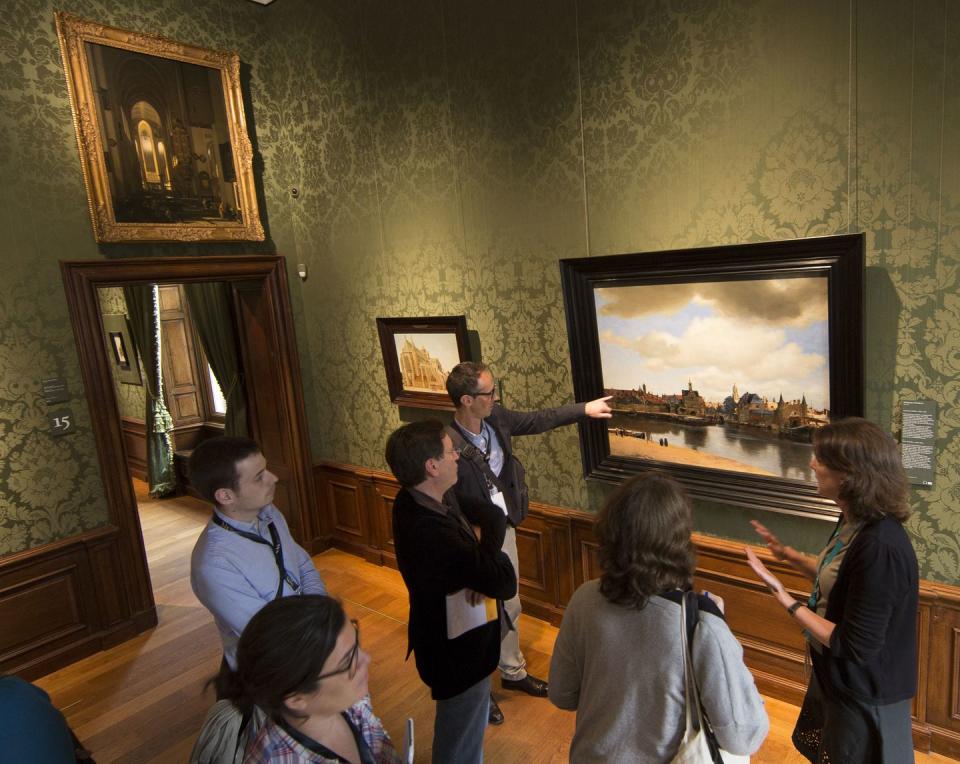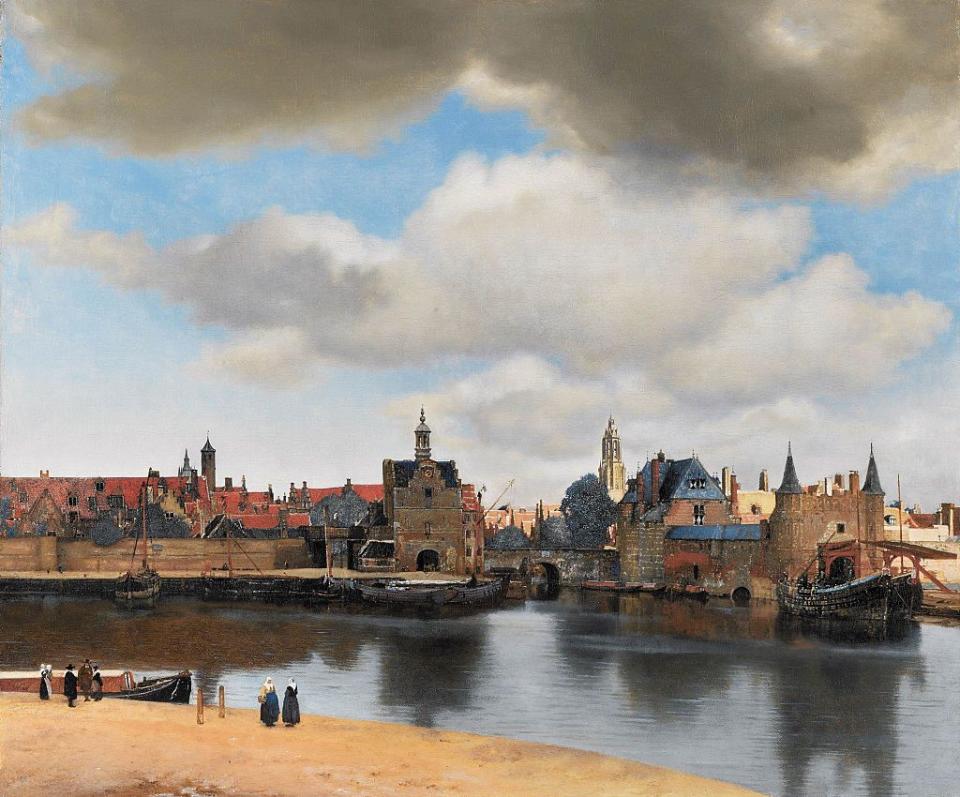Celestial Experts Solved the Investigation on What Time of Day Vermeer Painted His Masterpiece

Students and physicists traveled to the Netherlands to sleuth out a Vermeer masterpiece.
The Dutch Golden Age has drawn scholarly attention, even in science, for centuries.
The group used measurements, time clues, and astronomical data to pinpoint the painting's date.
Noted sky experts led by a Texas State University astronomer have put their heads together to analyze the specific time a masterpiece was painted. The group is made of retired and emeritus professors and current students, and they traveled to Delft in the Netherlands for an essential mission: to precisely date one of Johannes “Jan” Vermeer’s most beloved paintings.
Vermeer is one of the Dutch masters, a group of artists who spent the 17th century leading the western world’s interest in their specific style of painting. Vermeer is especially known for his sense of color and light, as in his most famous painting, Girl with a Pearl Earring.(Where and how he positions his model near an open window forms part of the plot of both the book and movie of the same name.)
▪️ UNLIMITED POP MECH: The coolest science and tech stories you can't find anywhere else, whenever you want them.
“Nowhere is this technical precision more evident than in his masterpiece, View of Delft, a vibrant cityscape that has captivated viewers for centuries,” Texas State University said in a statement. “Because few details of Vermeer's life survive to the present day, little is known about when View of Delft was painted.”
In an article in the new issue of Sky & Telescope, the group describes its questions and the trip and science that helped to solve it. That began with the existing body of knowledge.

“Art historians have long assumed Vermeer painted it sometime during late spring or early summer of 1660. Based on the lighting, scholars have offered a wide variety of times of day: morning, mid-day, afternoon and sunset have all been mentioned,” TSU said in the statement.
“Most printed sources claimed the light in the image was coming from the west in Vermeer's painting, while others were certain that the sun was high overhead. Olson and his students consulted maps of Delft and realized the view is looking north. That meant the light would be coming from the southeast, making the painting a morning scene, as some previous authors have asserted.”
From there, the details get wonderfully fiddly, beginning with an unusual tower in the painting. “The octagonal tower has a stone column projecting from each of the eight corners. In the painting, the column in the center almost, but not quite, shades the column to the left,” the statement explains.
A clock in the painting is found to represent an earlier clock style with just one hand, which changes what time it’s displaying. And the clock tower has an empty place where, eventually, some bells were installed in 1660.

Armed with this knowledge and observational data, and boosted by a lot of triangulation using Google Earth and good old fashioned measurements, the researchers brought in their powerful astronomy tools for the last part of the work. From the statement:
“Using the data collected from their research, the Texas State team used astronomical software to calculate when the sun's position in the sky at 8 a.m. local mean time in Delft to produce the observed shadows on the Nieuwe Kerk tower. The software returned only two possible date ranges: April 6-8 and September 3-4.”
Now we’ve reached a final conclusion worthy of a Sherlock Holmes tale. The team knew the far northern climate wouldn’t have leaves on the trees in April, and there are leaves in the painting. That means the September date range is the only viable possibility. The researchers concluded the painting was done in September of 1659 at the very latest.
Vermeer was born in October of 1632 and would have been just 36 at the very end of the date range including September of 1659. His large paintings could take years even after he captured the initial likeness, but the Texas team feels confident he took a look out the critical window no later than that date.
You Might Also Like

 Yahoo News
Yahoo News 
